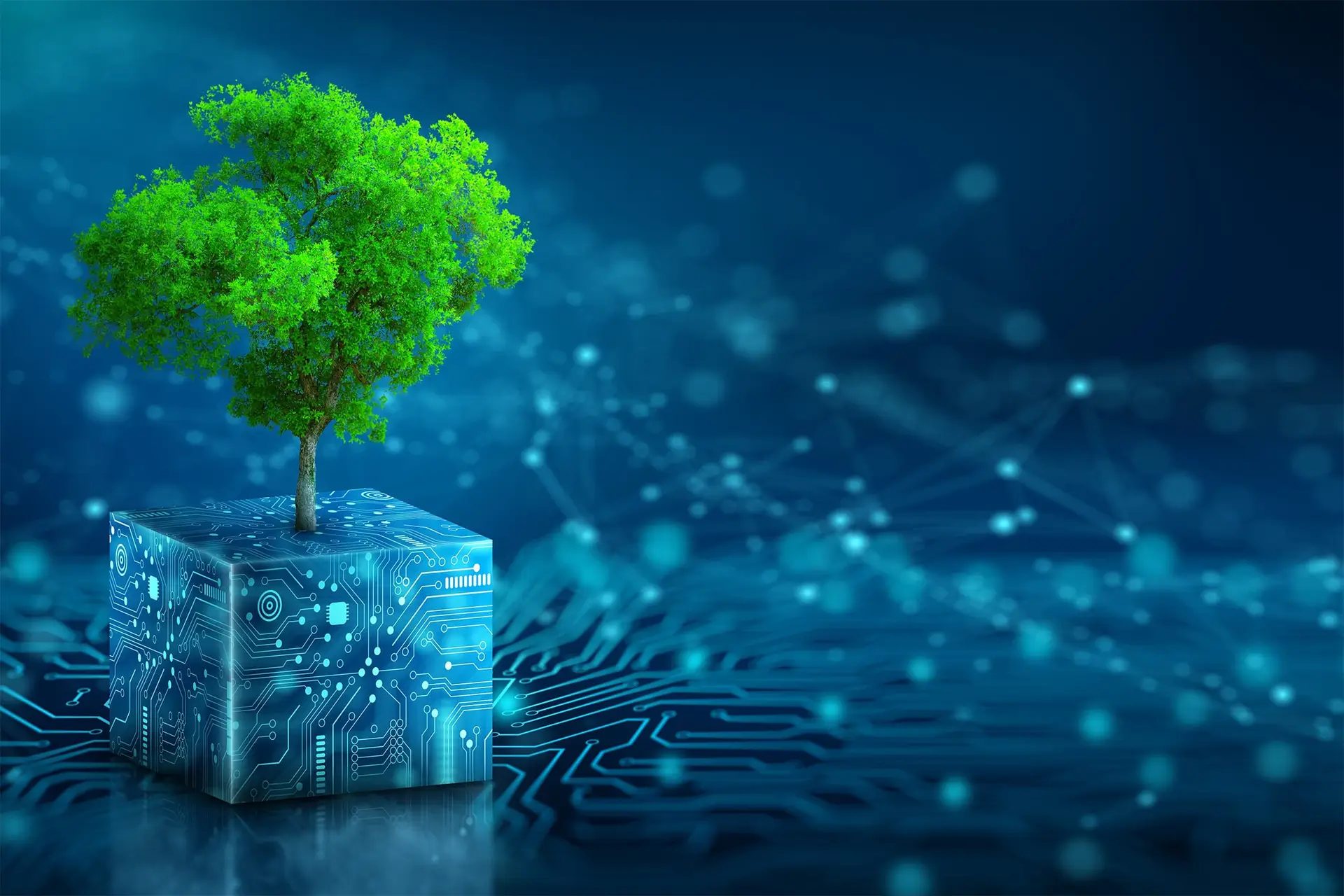Less than nine percent.
That is currently the degree to which the global economy is circular, as the 2022 Circularity GAP Report shows. For humanity to have a future on this planet, we need to at least double this figure. And fast. But for now, the development is stagnant at best, trending downward at worst.
In my last LinkedIn article, I laid out how digital technology has the power to create infinite growth in a world with finite resources. To create value for shareholders without destroying value in nature. To enable us to work together on making earth a better place for everyone, explicitly including future generations. It was a hopeful message that I wanted to convey – and it is one I still believe in. And yet one needs to acknowledge that progress towards the circular economy is not as quick as it could – and should! – be. Even though the technologies for it exist. And even though studies such as those by Accenture and Material Economics show a correlation between a commitment to the circular economy on one side and significant benefits, for companies and society as a whole, on the other.
Today, I will talk about
- how the concept of the Digital Product Passport (DPP) is the key that grants us entry to the realm of circular economy on a global scale,
- how, among other factors, a prisoner’s dilemma keeps many companies, especially SMEs, from implementing DPPs, despite big players blazing the trail in this regard,
- and what steps we need to take if we want to achieve the necessary breakthrough anyway.
From digitalized product manufacturing to digitalized product lifecycles
https://catena-x.net/de/Just a short refresher – what is a DPP? In short, it is a digital collection of all relevant information about the whole lifecycle of a product from raw material sourcing to end-of-life and beyond, i.e., when the product’s components and materials are recycled or reused. The basic idea is nothing particularly new, it is analogous to concepts such as the “digital twin”, “environmental product declaration”, and “material passport” that are discussed or implemented in different contexts.
Ideally, it will provide all data on the materials, components, and chemical substances in a product as well as all relevant information from its supply chain and on its repairability, spare parts, and proper disposal instructions. This creates a level of transparency that is essential for any meaningful measure to optimize the design, production, use, and disposal / reuse / recycling of the product in question.
And creating such transparency is at the core of endeavors such as the Circular Cars Initiative, a multi-stakeholder collaboration by the World Economic Forum and the World Business Council For Sustainable Development (WBCSD) fostering new technologies and business models to allow the automotive industry to meet the 1.5° C climate goal of the Paris Agreement. Similar initiatives exist in the electronics industry, for example PACE (Platform for Accelerating the Circular Economy). Big industry players from the biggest automotive manufacturers to high-end electronic manufacturers have already made impressive progress towards the required transparency regarding their material compliance and resource use through digital technology and information exchange, for example in the form of the automotive industry’s highly successful International Material Data System (IMDS), the first industry-level tool that many relevant automotive industry players have adopted, including OEMs and suppliers around the globe. And a new initiative, Catena-X now develops frameworks for exchanging even more product data.
Exactly this combination of technology, standardization and cooperation is necessary to implement circular economy mechanisms and business models across the board.
Mutual mistrust is rationally understandable, but not productive
However, for many corporate decision-makers, especially those in SMEs, sharing information about their products and supply chains with their market segment – i.e., their competitors – can be a daunting request. Their company’s specific knowledge is a crucial factor for its success, and its survival, after all. So why risk giving even just a little bit of it away? No matter how tempting the fruits of circular business models may be – this prisoner’s-dilemma-like scenario cannot be underestimated in its effect:
Sure, if everyone were to cooperate, the result would be maximally good for everyone. But if only I cooperate and others betray me, this would bring the worst possible outcome for me personally while the other players reap at least somewhat good results, if only for themselves.
One can be forgiven if one decides to preemptively betray – or at least not trust – other players in such a scenario, even if it means sacrificing the best possible outcome: in this case, a circular economy massively benefitting everyone. Experiments have shown that rational beings – which humans tend to be, most of the time at least – tend to take this better-safe-than-sorry route far more often than deciding to blindly trust their vis-à-vis.
This kind of mistrust is of course not the only roadblock on the way to DPPs being implemented across the board. A lack of standardization for data formats and exchange channels, for example, is at least as much of a factor. But fixing this again requires cooperation across entire industries, markets, economies, between partners and competitors. It requires coming together, hearing each other out, and exchanging information – and we’re instantly back to the prisoner’s dilemma scenario I just talked about.
The solution: a mix of regulation, changing mindsets, and technology
As always in life, there is no simple and singular solution to such a complex problem. Instead, we must pursue several paths at the same time.
The first is political and regulatory initiatives such as The European Commission’s New Circular Economy Action Plan, Japan’s Circular Economy Vision 2020, or China’s 14th Five-Year Plan for Circular Economy Development. Combining incentives with regulatory pressure will no doubt be a motivator for many decision-makers to try new ways.
But extrinsic motivation is a weak basis for sustained progress towards the kind of “coopetition” necessary in the future circular economy. It can work short-term for singular measures, but the second path will have to be for decision makers to change their mindset on how to lead a company in these times. Keeping and protecting your trade secrets and specialized know-how in your company will always be a valid interest – and an important factor for entrepreneurial success. But current developments such as glocalization, accelerated innovation cycles, the breakthrough of business models such as X-as-a-service and, of course, the necessary transformation of our economy from linear to circular requires more from leaders than just walling in their castle: Today, it is a matter of weighing what to keep to oneself and where to open up to others in order to tackle the great challenges of our time together.
But this is of course easier said than done. Even with the best will in the world to cooperate, there is still the question of practical implementation. IT systems, which are the basis and platform for all digital ventures such as the DPP, are basically always brownfield systems, specialized for the needs of one company alone and not designed to exchange standardized data with the whole market segment. This is why I decided to invest in and build companies like CircularTree or Q-nnect with solutions specifically for this problem area. For example, Q-nnect with its digital Q! platform acts as a broker between different systems via a harmonized meta layer: It enables competitors to let their IT landscapes exchange necessary information for cross-company cooperation while protecting identities and sensitive data through anonymization at the same time. This comes in tandem with a low-code approach, making implementation and configuration of such processes easy even in the face of the ubiquitous shortage of skilled workers especially in the digital field. Connecting this with a business layer from CircularTree will enable organizations to make internal data available on multiple platforms in the future.
There is a lot of mistrust and conflict in the world, in times where the world instead needed to come together to solve some of the most dangerous crises mankind has ever faced – climate change and resource scarcity. Regulation needs to and will come, but it will only take us so far. If the transformation to the circular economy is to succeed, we must accept the concept of coopetition – and good thing that technology is available that makes realizing this concept easy and safe.
Let’s get to work. Together.



